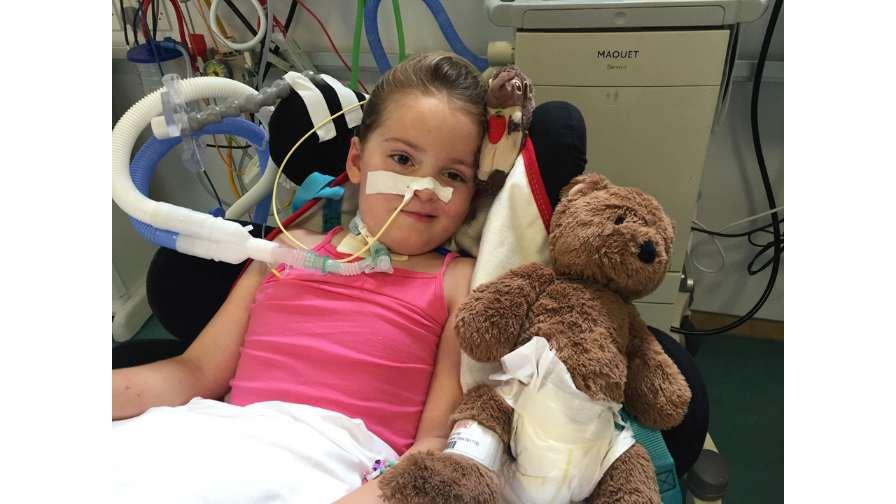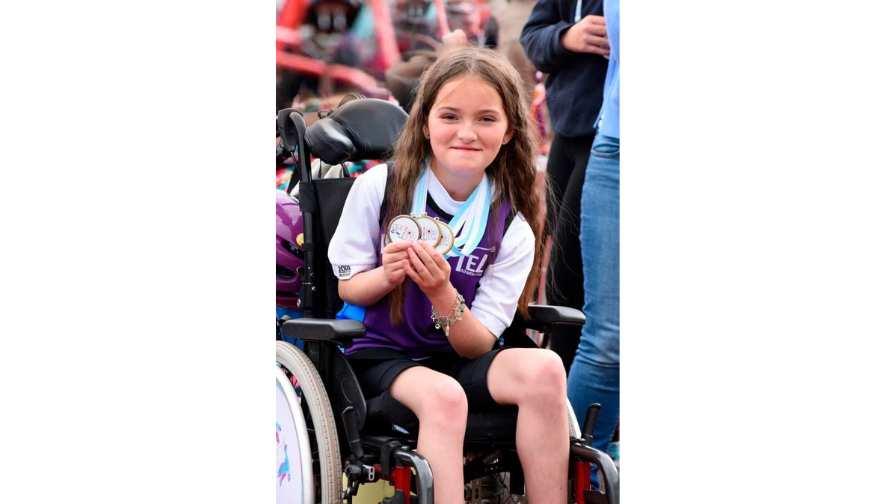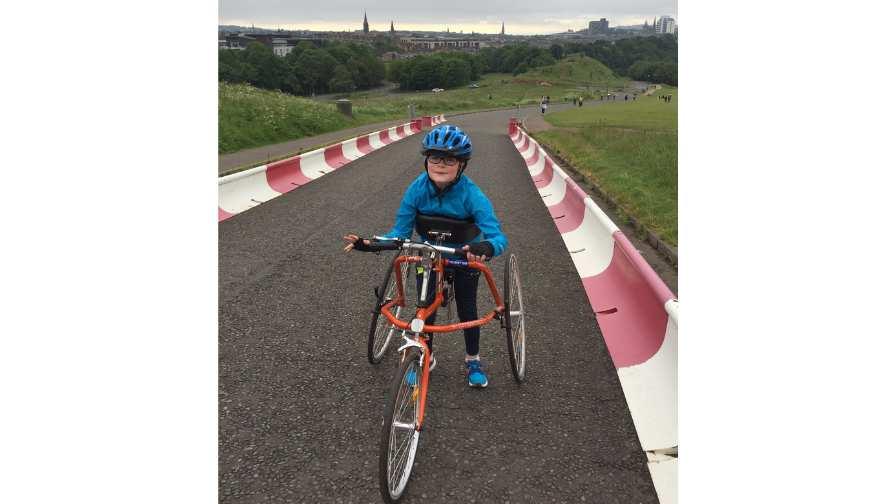A new study found that Frame Running has the potential to positively affect health and wellbeing of young people with limited mobility. Frame Running (formerly known as RaceRunning) is an adapted sport for children, young people and adults who cannot run and who rely on aids for mobility and balance.1 A Frame Runner is a three wheeled frame where the individual is supported by a saddle and body plate. The athlete propels against the frame using their feet, and steers using handlebars like those on a bike.1 Researchers observed a trend towards improved muscle strength after 12 weeks of Frame Running training and many participants noticed an improvement in their performance of activities including being able to walk for longer and walking uphill. Action Medical Research and the Chartered Society of Physiotherapy Charitable Trust jointly funded the study.

Poppy’s story
One of the study participants, 13-year-old Poppy, has paralysis and weakness in her upper body and core due to a rare neuromuscular condition called acute flaccid myelitis (AFM) which she developed at age six. “For Poppy, Frame Running and participating in the study has been life transforming. As a result of developing acute flaccid myelitis, Poppy had to learn to sit, stand and walk again and uses a wheelchair. She also has a gastrostomy (feeding tube) to help her get the nutrition she needs and uses a ventilator at night to help her breathe. Before the illness, Poppy was a very sporty child and loved running, but as a result of the illness, she could no longer run or take part in any sport safely – until she discovered Frame Running,” says Laura, Poppy’s mother. “The opportunity to try Frame Running was a positive turning point in Poppy’s life. She left one of her early sessions with a massive smile on her face and said 'Mummy, I am so happy that there is a sport that I can do.’ She felt strong and accomplished and it gave her a huge confidence boost.”
The results of the study are significant as people with cerebral palsy and conditions such as AFM may be at increased risk of heart disease and type 2 diabetes due to reduced mobility.2 Children with cerebral palsy may have difficulties walking and can find it challenging to take part in physical activities. This can lead to a lack of exercise that often starts early on in childhood and persists throughout their lives. Dr Marietta van der Linden from the Centre for Health, Activity and Rehabilitation Research, Queen Margaret University, Edinburgh says: “Our research showed that Frame Running can have a wide range of benefits, not only on outcomes of fitness and physical fitness but it also allows young people to feel part of a club, make friends, compete and go fast.”
In the pilot study, 15 children and young people with cerebral palsy or acquired brain injury affecting coordination took part in a one-hour weekly Frame Running training sessions for 12 weeks. Results show that Frame Running is a feasible, enjoyable and safe activity for children and young people with severe walking difficulties. In the study interviews, children said that they enjoyed the sense of freedom and speed of Frame Running and that it provides them with opportunities to be active and competitive. Parents liked that Frame Running could also serve as physiotherapy or as part of their rehabilitation strategy. The data collected before and after the study showed positive trends indicating improvements in resting heart rate, muscle strength, and self-reported performance of activities such as being able to walk for longer and walking uphill. However, further studies with more participants are needed to verify this.
Action Medical Research are pioneers in funding innovative early research which paves the way for new treatments and management of medical conditions. “The success of this research in demonstrating the health benefits of Frame Running is significant as it could result in people with mobility problems and cerebral palsy participating in physical activity and reducing their risk of heart disease and diabetes,” says Dr Caroline Johnston, Senior Research Manager at Action Medical Research.
The research has stimulated additional research funded by the MS Society investigating the feasibility of Frame Running for people with Multiple Sclerosis. “We found very similar themes in our study involving people with MS, but there were some interesting differences as well, which highlights the importance to regard each health condition and each person individually,” says Dr Marietta van der Linden.

Ian’s story
Participating in an innovative Frame Running study has transformed the life of thirteen-year-old Ian from Edinburgh who lives with cerebral palsy. Ian’s mother Sheena came across RaceRunning, now known as Frame Running, in 2019. Ian, even though he was only eight at the time, really took to the sport and has been Frame Running ever since.
Ian was one of 15 young people who took part in the study, which found that Frame Running had the potential to positively affect health and wellbeing: Researchers observed a trend towards improved muscle strength and many participants observed an improvement in their performance of activities including being able to walk for longer and walking uphill. The results of the study will inform the design of future larger studies involving participants from both the UK and abroad. Dr van der Linden comments: “These results are promising and we hope that these custom-built running frames can enable children with cerebral palsy to take part in aerobic activities that can help improve their overall fitness. We are delighted that Ian has really taken to Frame Running and hope that this example will inspire other young people who have mobility issues to benefit from the exercise and freedom that comes with Frame Running.”
Ian’s mum, Sheena, comments: “Ian really enjoyed being part of the study and trains twice a week. Frame Running has given Ian a sense of physical independence and made him realise that he can achieve great things. Ian challenged himself to climb 8,810 steps which is equal to the height of Scotland’s highest mountain, Ben Nevis, and he did it! I am thrilled at what Ian has achieved including winning the Rotary Young Citizen Sporting Hero award. I really hope that he has shown what is possible with Frame Running.”
Chief Executive at the Chartered Society of Physiotherapy, John Cowman, said: “It is so brilliant to see the results for this study which clearly show that frame running has a very positive impact on the health and wellbeing of young people with limited mobility. Hopefully, this research will pave the way for it to become more widely available for children, young people and adults who rely on aids such as this to take part in sports and to be able to enjoy all that it has to offer.”
Find out more: https://action.org.uk/research/successes/frame-running-new-sport-children-limited-mobility.

References
1. Frame Running. Cerebral Palsy Sport. Available at: Frame Running | CP Sport | Cerebral Palsy Sport. Accessed February 2024.
2. Peterson MD, Ryan JM, Hurvitz MD, Mahmoudi et al. Chronic Conditions in Adults With Cerebral Palsy. JAMA 2015; 314(21):2303-2305.
